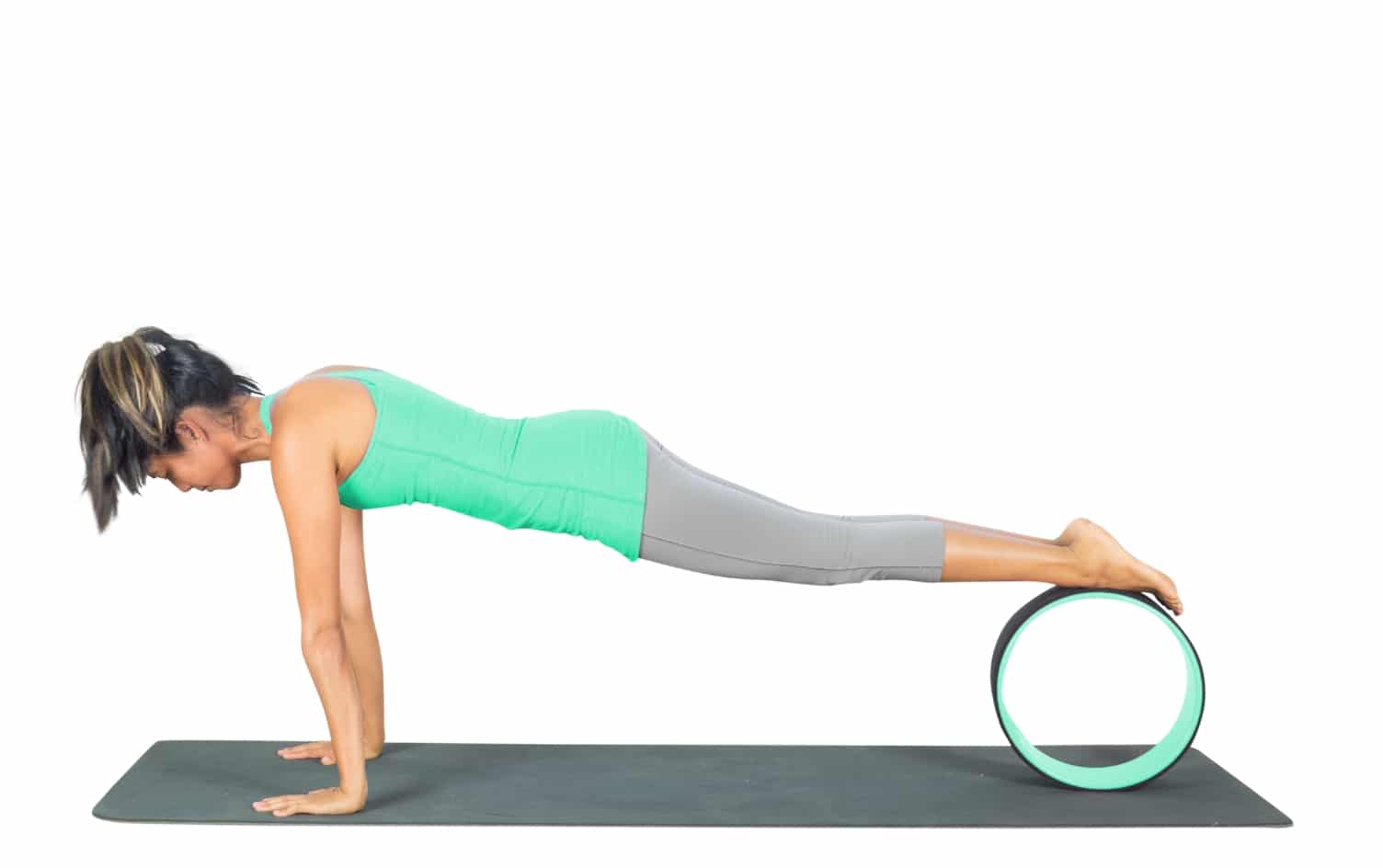If you’ve thumbed through Instagram lately, you’ve seen the yoga wheel. It’s the circular prop helping your favorite yogis defy gravity and bend in even more Gumby-like ways.
The yoga wheel — a hollow hoop made of plastic, cork or some combination of the two — was designed to match the curve of the spine and help practitioners get deeper into poses, notably backbends.
In the five years since the original Dharma Yoga Wheel came on the market, the wheel’s popularity has soared, several others have emerged and their use has moved far beyond backbends. Fans credit the tool with relieving aches and pains, stretching the body, improving balance, building core strength and more. But is the hot new prop worth all the props?
THE WHEEL AS A FOAM ROLLER?
Enthusiasts say the wheel relieves aches and pains in two ways: one, by rolling on it as you would with a foam roller and, two, by opening the chest, shoulders and back. Foam rolling can improve circulation, increase range of motion and loosen muscular tension thereby relieving aches and pains and aiding in recovery.
However, rolling with a yoga wheel, which is made of a hard plastic or cork, can be incredibly intense and even painful. A softer foam roller reduces the risk of bruising and irritation, or a small rubber massage ball might also work better than the wheel. A massage ball has enough squish that bones can sink into it and the smaller size allows you to get into tougher to reach areas.
OPENING UP CHEST, SHOULDERS AND BACK
The yoga wheel can be a great way to open up the chest, shoulders and back. Here are four poses to help do just that:
CHILD’S POSE
Child’s pose stretches the hips, thighs, shoulders and back. Adding the wheel or a block under your arms deepens the opening in the shoulders and back.
The move: Kneel on the floor and sit back on your heels. Separate your heels so they’re hip-distance apart. Place the yoga wheel between your knees, set your hands on top of it and, as you exhale, roll the wheel away from you until your torso is resting between your thighs.
HALF KNOT
Half knot, also known as threading the needle, uses your bodyweight to stretch the muscles in your back and shoulders and release tension in your neck.
The move: Kneel facing the wheel and rest your left hand on top of it. As you inhale, take your right arm to the sky, palm facing away from your body. Exhale and thread your right arm under your chest, resting your shoulder on the ground. Turn your right palm up toward the sky. Press your left palm into the wheel to deepen the stretch. Hold for several breaths. Then, on an inhale, sweep your right hand toward the sky for a gentle counter-twist. Exhale, release your right hand to the earth and repeat on the other side.
RECLINING BOUND ANGLE
The move: Bring the soles of your feet together and let your knees fall apart toward the floor. This starts to open the hips and groin. Then lean back onto the wheel, placing your upper back along its curve to open the chest. If you don’t have a wheel, you can rest on a bolster, pillow or block.

FISH POSE
Fish opens the front of the body, particularly the chest and shoulders. A wheel can help you hold the pose longer and deepen the stretch.
The move: Sit on the floor with your legs extended and your midback resting lightly on the yoga wheel. Inhale, point your toes, squeeze your inner thighs together, and lift your hips. Let your head relax on the wheel and rest your arms in a way that feels comfortable and keeps you balanced.
BUILD CORE STRENGTH
The wheel can really challenge your balance and that is a sneaky way to build core strength. Here are three variations with the wheel that will set your core on fire.

PLANK
The move: Come into downward dog with the wheel between your legs. Place one foot and then the other on the top of the wheel, roll out into plank. Hold here for several breaths or make it more challenging by lifting one foot and then the other. Or try bringing one knee into your chest or elbow, extending it back to the wheel and switching.
KNEE TUCKS
The move: Come into plank with the tops of your shins on top of the wheel. Contract your core, bend your knees and draw your legs toward your chest so the wheel moves toward your chest. Return to starting position.
THE KATE HUDSON
The actress made this core-and-glute-busting variation of tabletop an Insta-favorite.
The move: Come into downward dog with the wheel between your legs. Drop your right, upper shin onto the wheel. Roll forward so your shoulders are over your wrist. Lift the left leg, bend the knee and press the foot toward the sky. Lower and repeat several times before switching sides.
MAKING CHALLENGING BACKBENDS ACCESSIBLE
For intermediate and advanced yogis, the wheel can be helpful in working toward backbends like the actual pose wheel and king pigeon. The tool adds support along the spine or between your shoulder blades, helping build confidence and strength as you work toward the pose.




